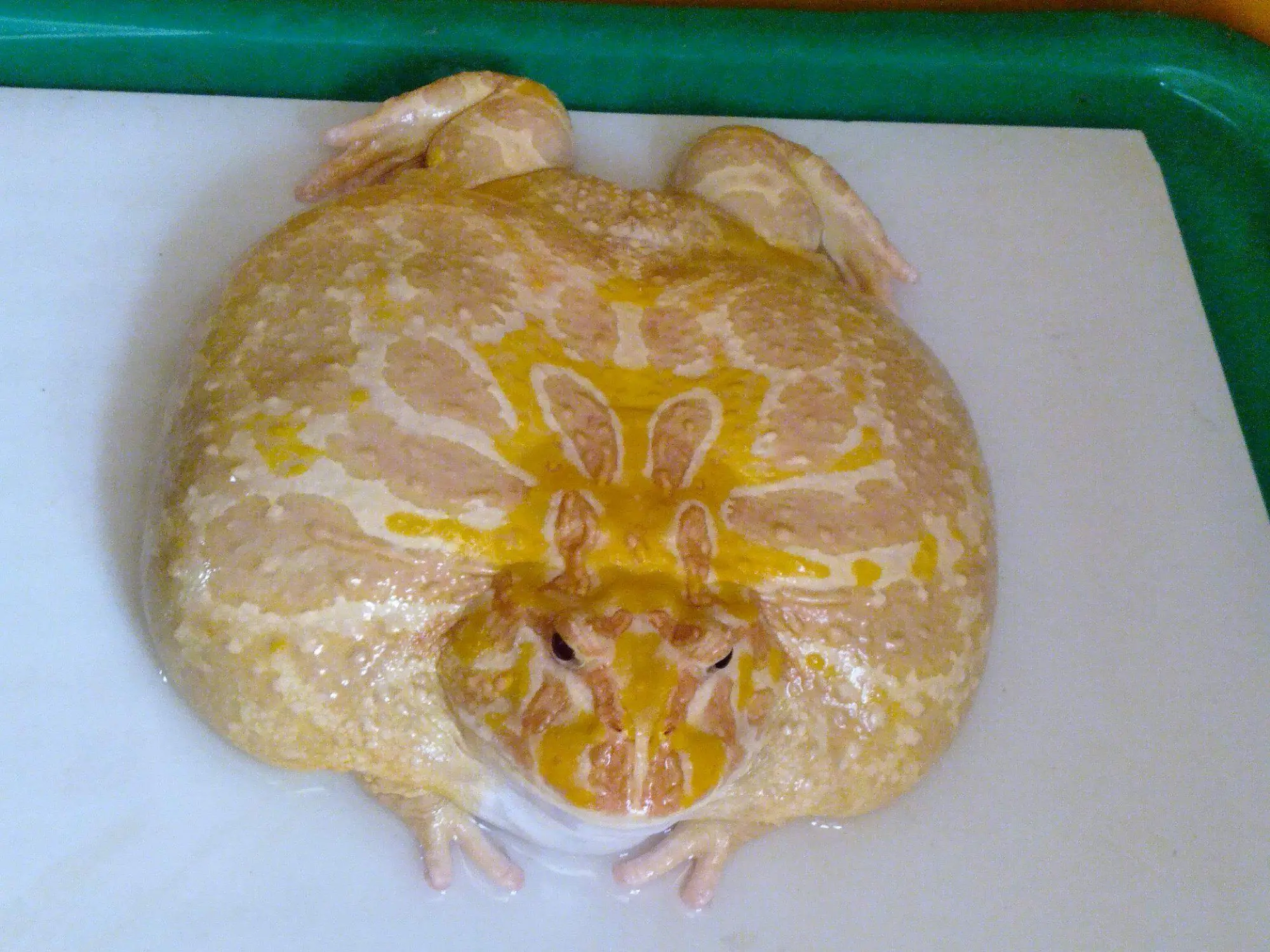As a Pacman frog owner, it can be rather daunting trying to determine if your frog is overweight or the right size. These frogs are massive frogs that grow quickly. They are heavy, lazy, and hearty eaters.
Knowing if your Pacman is overweight is beneficial, helping you provide them with solutions needed to lose weight and improve their overall health.
What Does an Overweight Pacman Frog Look Like?
It’s not easy determining if your Pacman frog is a healthy weight or overweight. They are ferocious eaters and lazy frogs. Captivity is what has resulted in the risk of obesity in these large and friendly amphibian pets.
Signs your frog could be overweight includes:
- The Pacman is wider than it is long
- Can feel fatty deposits around the belly area

What Causes a Pacman Frog to be Overweight?
Frogs that are kept in captivity are prone to suffering from obesity. The Pacman frog is a lazy frog, an opportunistic eater that eats anything that comes past it that is smaller than itself.
In captivity, they eat without regard for the energy they need, which leads to obesity.
If you are unsure if your frog is overweight or healthy, there are some signs that could help you identify you have an obese Pacman on your hands, this includes:
- Lethargy
- Struggling to move
- Problems with respiratory system
- Excess body weight is visible
It’s not uncommon to come across an overweight Pacman frog. They have insatiable appetites and they will eat when the opportunity knocks, whether they are hungry or not. These are inactive frogs that tend to bulk up just before breeding season.
In captivity, it’s you job as a responsible amphibian pet owner to provide your frog with a varied diet. The endless supply of prey can lead to your frog becoming overweight.
It’s uncommon to see a young Pacman frog being overweight, as they use the extra calories to aid in their growth. Adult frogs, on the other hand, can become obese within months.
Being overweight is exceptionally dangerous for your frog and can result in a host of health issues.
Related – How to feed a Pacman frog
Diagnosis
The best way to diagnose if your Pacman frog is overweight is to visit your vet and let them examine the frog’s body to feel for fat deposits. They will compare the weight against other Pacman frogs of the same age.
If your frog is female, they may do an ultrasound to differentiate between egg masses and fatty deposits.
How Do I Help a Pacman Frog Lose Weight?

Fat Pacman frog
There are four ways you can help your Pacman frog lose weight; this includes:
- Increase enclosure size to boost activity and metabolic rate, thereby burning extra calories
- Keep temperatures in the upper end of the proffered choice to accelerate the metabolic rate and calorie use. Never exceed the maximum temperature recommended.
- Reduce the amount of food provided.
- Reduce fat intake by eliminating mice and fish from your Pacman’s diet.
Related –Ways to maintain ideal temperature in a Pacman frog enclosure
Living and Management
Overfeeding can lead to your Pacman frog becoming overweight. Long term management and living should be based on regular monitoring of your frog’s food intake and encouraging it to hunt rather than be fed with tongs.
Always speak to your vet to put a proper diet plan in place for your amphibian pet.
Conclusion
Overweight and obesity is not uncommon in Pacman frogs. As a responsible pet owner, you will want to put a good diet plan in place to ensure your frog has a varied diet without the risk of putting on too much weight.